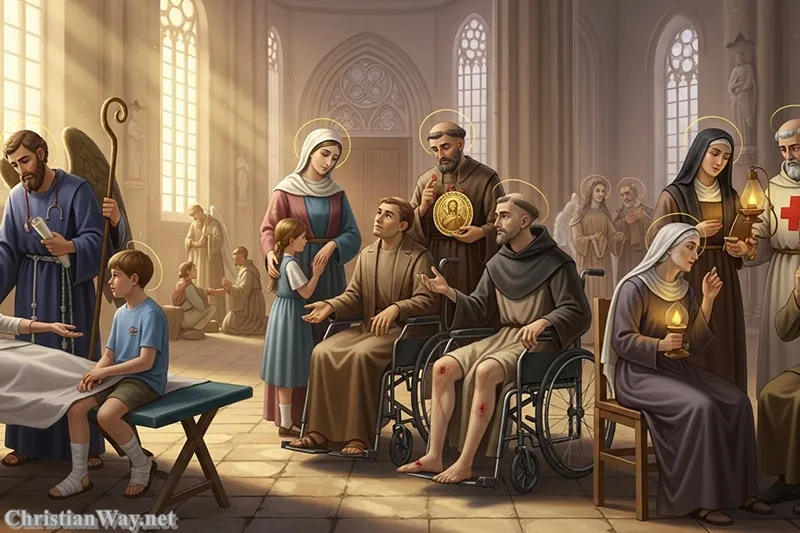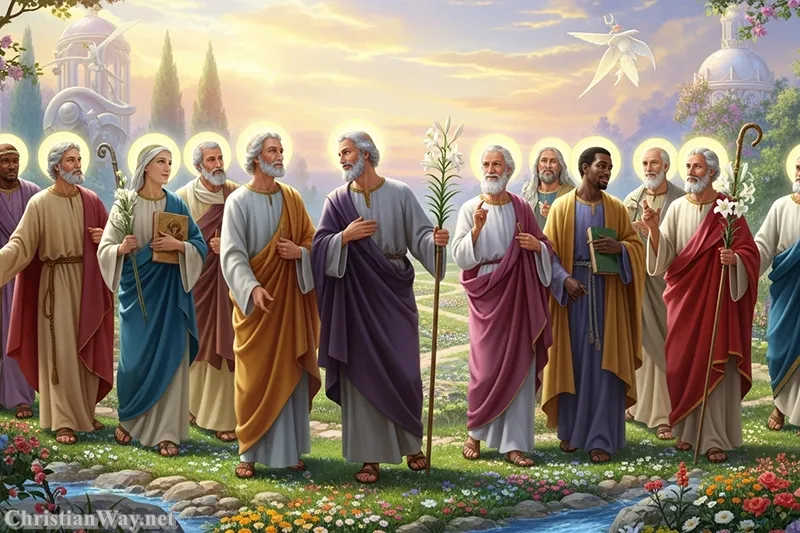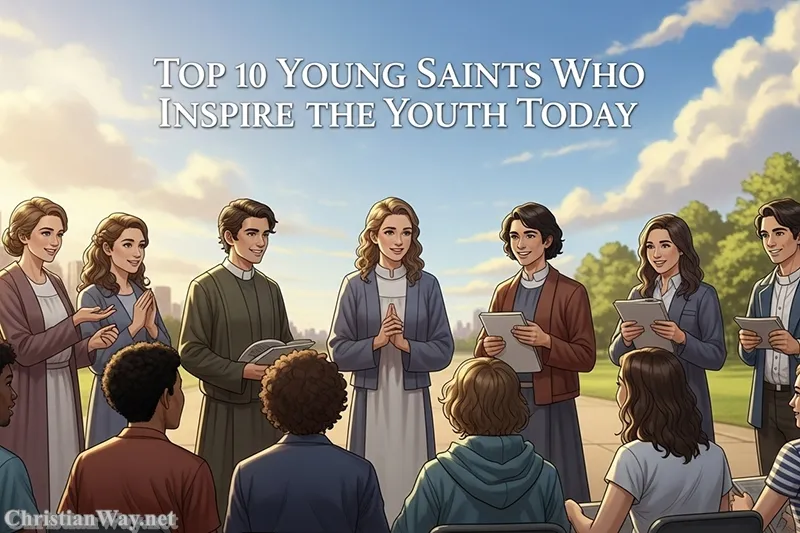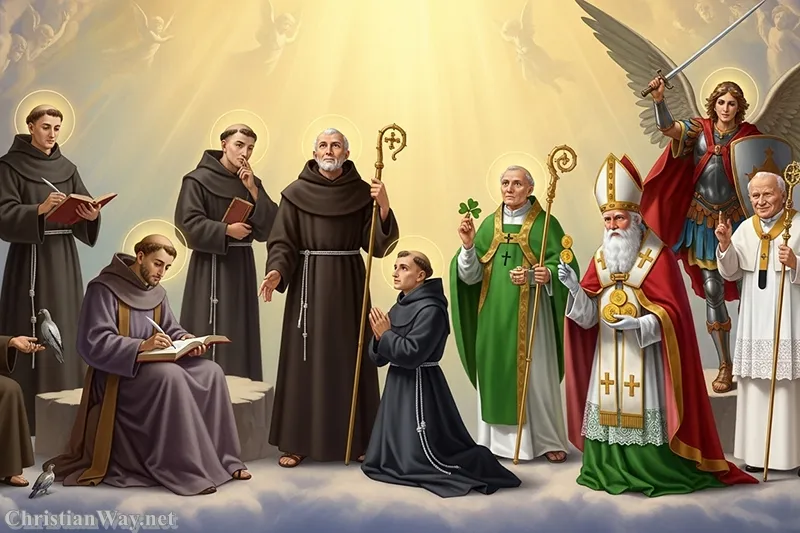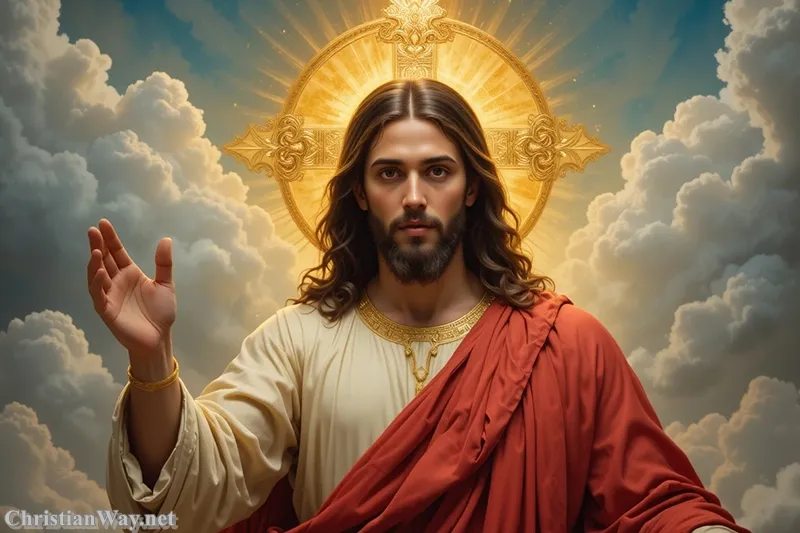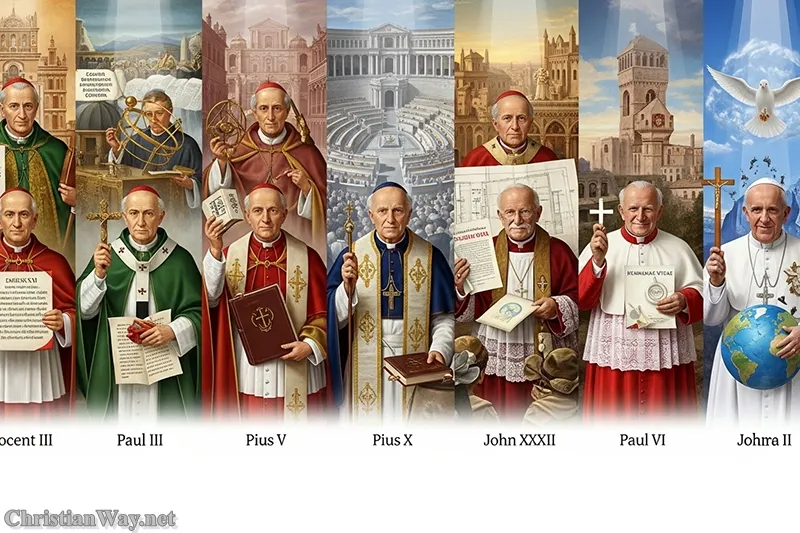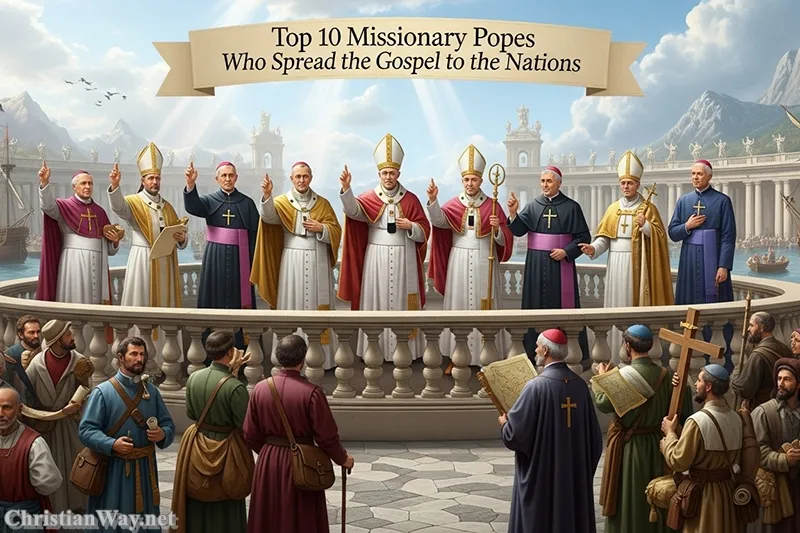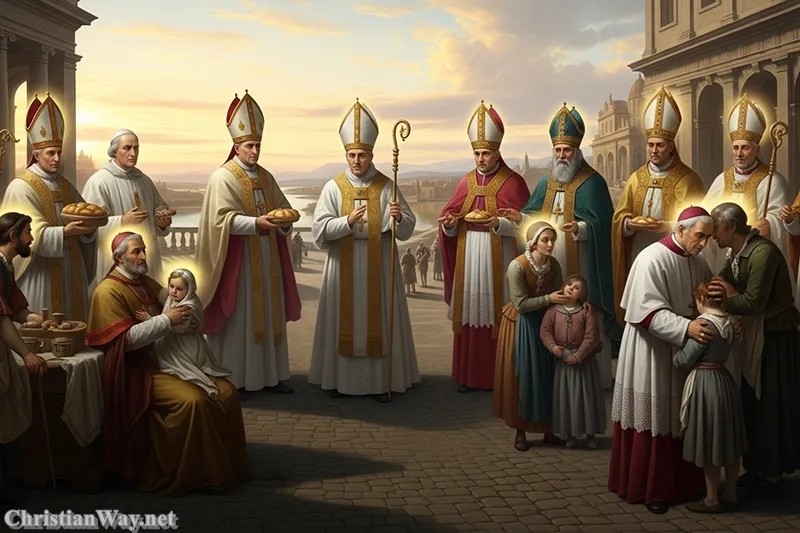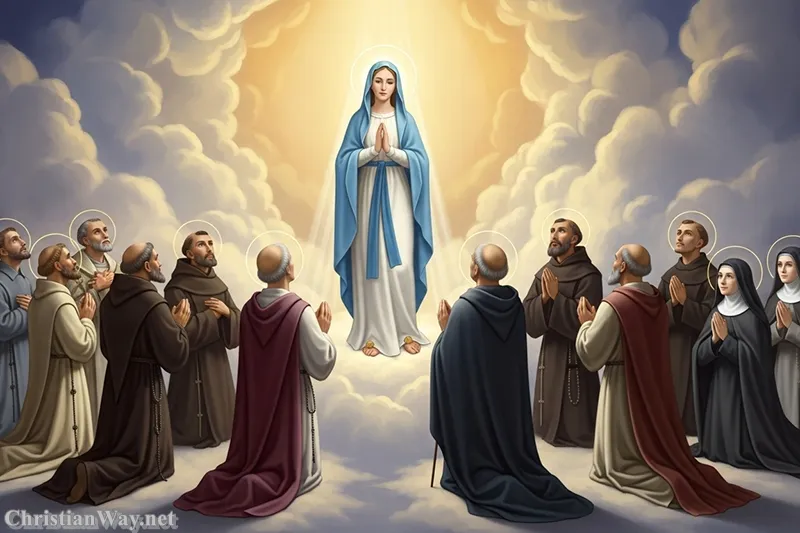Every age of the Church bears its own challenges and graces. The 20th and 21st centuries, perhaps more than any before them, have tested both the faith and the resilience of humanity. War and peace, prosperity and poverty, faith and secularism, unity and division—all have marked our modern world. And through each of these storms, God has provided shepherds: popes who carried the light of Christ through an ever-changing landscape.
These modern popes—from Pius X to Francis—have guided the Catholic Church in the modern world with courage, humility, and faith. They are the 20th and 21st century popes who stood as bridges between eras, helping the Church speak anew to each generation while remaining rooted in the timeless Gospel. Their lives are more than history; they are mirrors of Christ’s love at work through human frailty, intellect, and sanctity.

Let us take a quiet journey through these ten successors of Peter—men who carried the same keys, prayed the same creed, and yet faced vastly different worlds.
1. Saint Pius X (1903 – 1914)
The Pope of the Eucharist and Pastoral Renewal
When Giuseppe Sarto became Pope Pius X in 1903, the world was stepping into industrial modernity. He had been a parish priest, a bishop, and a man deeply rooted in the ordinary life of the faithful. As one of the earliest truly modern popes, his heart beat for the people, not the courts of kings or the grandeur of Rome.
Pius X was known for his humility. His papal motto, Omnia instaurare in Christo—“To restore all things in Christ”—was not mere ornamentation. It became the central theme of his pontificate. He reformed the Church’s liturgy, encouraged frequent and early reception of the Eucharist, and simplified the catechism so children could know Christ intimately.
In a time when intellectualism threatened to distance the faithful from devotion, he reminded the Church that holiness is accessible to every heart. He called the Eucharist “the shortest and safest way to Heaven.” For modern believers, living amid distractions and disbelief, his witness still beckons us: return to the altar, for there is life.
2. Benedict XV (1914 – 1922)
A Voice of Peace in a World at War
When World War I erupted, humanity’s faith in progress shattered overnight. Into this chaos stepped Pope Benedict XV, whose heart bled for a divided world. He called the war a “useless slaughter,” pleading for peace and offering relief to victims of every nation—without distinction of side or creed.
While governments saw him as naïve, he was prophetic. Benedict XV embodied the compassion of Christ, showing that the Church must stand above politics to serve the dignity of the human person. He established the Vatican’s first major humanitarian network, sending aid to prisoners, refugees, and the wounded.
His witness reminds the modern papacy that neutrality is not indifference, but mercy. He proved that in a time of total war, the Church must be a mother who refuses to abandon any of her children. As violence and ideological hatred resurface in our century, his call still echoes: Blessed are the peacemakers.
3. Pius XI (1922 – 1939)
Faith Against Ideologies
Achille Ratti became Pope Pius XI during an age when totalitarian ideologies sought to dominate both the mind and the soul. Fascism, communism, and racial nationalism tried to claim ultimate loyalty. Pius XI stood firm, teaching that only God is absolute.
He signed the Lateran Treaty in 1929, establishing the independence of the Vatican State and thus guaranteeing the freedom of the Church. He wrote strong encyclicals defending faith, family, and human rights. Against both right- and left-wing extremes, he insisted that “no one can be at once a good Catholic and a true socialist who denies God.”
Under his leadership, the modern Catholic Church rediscovered the courage to speak moral truth to power. He reminds us that the Gospel is not a servant of any ideology—it is a flame that purifies them all.
4. Pius XII (1939 – 1958)
The Pope of Courage and Silence
Eugenio Pacelli ascended the papal throne on the eve of World War II. His years as a diplomat had prepared him for the hardest of burdens: leading the Church amid genocide, tyranny, and ruin.
Much has been written about Pius XII, but beyond every debate stands a man who prayed through the night while the bombs fell on Rome. He hid thousands of Jews in convents, monasteries, and even within the walls of the Vatican. His quiet diplomacy saved many lives, though it cost him misunderstanding.
After the war, he became a symbol of spiritual rebuilding. He encouraged modern biblical studies, Marian devotion, and the early dialogue between science and faith. His life shows us that holiness is not always dramatic; sometimes it is the steady endurance of one who bears the suffering of others in silence before God.
5. Saint John XXIII (1958 – 1963)
The Good Pope Who Opened the Windows of the Church
When the elderly, cheerful Cardinal Angelo Roncalli was elected in 1958, few imagined he would reshape history. Yet this “simple country priest” became the architect of the Second Vatican Council, the most important ecclesial event of the modern era.
Pope John XXIII’s vision was pastoral, not political. He longed to bring the Church’s light into the world—not by compromise, but by mercy. He said the Church must prefer “the medicine of mercy to the weapons of severity.” He embodied joy, approachability, and deep holiness. His face radiated the peace of a man who walked daily with Christ.
Through Vatican II, he invited the Church to rediscover its mission: not to hide from the world but to engage it with compassion. He reminds every Christian today that reform is not rebellion; it is the fruit of love.
6. Saint Paul VI (1963 – 1978)
The Pilgrim Pope and the Bearer of Vatican II
Giovanni Battista Montini, Paul VI, inherited the enormous task of implementing Vatican II’s reforms. He was a man of deep intellect and prayer, sensitive and courageous, often misunderstood. Yet his steady hand preserved the unity of the Church during turbulent times.
Paul VI guided liturgical renewal, advanced ecumenism, and became the first pope of the jet age—traveling to all continents as a pilgrim pope. His encyclical Humanae Vitae (1968) reaffirmed the sanctity of life and marriage, challenging the rising tide of moral relativism.
He faced criticism from both progressives and traditionalists, yet he carried his cross with serenity. To our 21st-century Catholic Church, his example teaches that faithfulness often means walking the narrow road between extremes, guided by conscience and love.
7. John Paul I (1978)
The Smiling Pope of Humility
Albino Luciani’s pontificate lasted only 33 days, but his gentle smile left a mark that still warms hearts. He was called “the smiling pope,” yet his simplicity revealed profound theological depth. He spoke of God’s mercy with childlike trust.
John Paul I refused coronation; he preferred a simple inauguration Mass. His short life as pope was like a single candle in the night—brief, but radiant. For the modern papacy, his example shows that holiness does not depend on duration, but on sincerity. God does great things through humble souls.
8. Saint John Paul II (1978 – 2005)
A Global Shepherd for a Global Age
Few names shine as brightly in modern memory as John Paul II. Karol Wojtyła, a Polish philosopher-poet, brought a dynamic energy to the papacy after decades of war and division. He was the first non-Italian pope in over 450 years, and his election electrified the world.
His message was clear: “Be not afraid.” He called the Church to the “New Evangelization”—a renewed proclamation of the Gospel to modern people. He traveled to 129 countries, embraced the young through World Youth Days, defended life from conception to natural death, and helped inspire the collapse of communism in Eastern Europe.
John Paul II was a mystic as well as a leader. His deep devotion to Our Lady, his theology of the body, and his personal holiness made him one of the great modern saints. He suffered openly with Parkinson’s disease, teaching the world how to die in faith.
He stands as the bridge between the 20th and 21st centuries—a saint of hope for the digital age.
9. Benedict XVI (2005 – 2013)
The Pope of Truth and Humility
When the gentle scholar Joseph Ratzinger was elected in 2005, many expected a rigid theologian. Instead, they found a humble teacher of beauty. He saw Christianity as an encounter with the living Christ, not an idea or a rulebook.
Pope Benedict XVI sought to re-anchor the modern Catholic Church in faith’s deep rational and spiritual roots. He called relativism “the dictatorship of the age,” urging the world to seek truth, not fashion. His encyclicals on love, hope, and charity ( Deus Caritas Est, Spe Salvi, Caritas in Veritate ) offered luminous teaching for a world hungry for meaning.
In 2013, acknowledging his failing strength, he became the first pope in six centuries to resign. That act of courageous humility transformed the modern papacy, showing that service is greater than power. Until his death in December 2022, he lived as Pope Emeritus, praying quietly for the Church he had served. His legacy endures: faith is reasonable, love is intelligent, and humility is strength.
10. Pope Francis (2013 – 2025)
A Shepherd of Mercy for the Global Church
In March 2013 the world greeted the election of Jorge Mario Bergoglio of Argentina — the first Jesuit pope, the first from the Americas, and the man who chose the name Francis. His pontificate shaped the Catholic Church in the modern world as one of outreach, humility, and solidarity with the most vulnerable.
Pope Francis lived his mission quietly but powerfully. He made mercy the hallmark of his papacy: visiting the marginalised, embracing refugees, caring for creation, reforming the Vatican, and inviting the Church to go forth. He often said that the Church must be a “field hospital” of compassion, not a museum of the past.
In the final years of his life he faced declining health yet remained at his post until the Lord called him home. On Easter Monday, 21 April 2025, at the age of 88, Pope Francis passed from this life into the Father’s house. He died peacefully in his Vatican residence after a stroke followed by cardiac arrest. His funeral took place in Rome on 26 April 2025, and he was laid to rest in the Basilica of Santa Maria Maggiore — fulfilling his humble testament.
His legacy stands among the modern popes as a beacon of hope: that the papacy is a service of love, a ministry of the forgotten, and a call to every Catholic to live the Gospel in simplicity and courage.
For our times — beset by ecological crisis, migration, loneliness, moral uncertainty — Pope Francis leaves us a challenge and a promise: be the Church that walks with the poor, speaks truth with tenderness, and shows Christ’s presence in every corner of the world.
Lessons of the Modern Papacy
1. The Church Lives by Continuity and Conversion
From Pius X’s Eucharistic renewal to Francis’s outreach to the margins, the modern papacy reveals one continuous thread: conversion. Each pope, despite different emphases, has sought to renew the Church by returning to Christ. In an age that prizes novelty, they teach us that the deepest renewal comes from the ancient source of grace.
2. Holiness Is Possible in Every Age
Some of these men were canonized; others remain under study. Yet all were disciples before they were leaders. They carried their own crosses: illness, misunderstanding, political pressure, and loneliness. The holiness of the modern popes reminds us that sanctity is not the absence of difficulty but the presence of faith.
3. The Papacy Serves, Not Dominates
Across the century, we see a clear movement from monarchical grandeur to pastoral simplicity—from the throne to the foot of the cross. The 21st century popes have redefined leadership as service, echoing Christ who “came not to be served but to serve.”
4. Truth and Mercy Are Two Wings of One Faith
Benedict XVI and Francis, so different in style, share this truth: doctrine without love is sterile, and love without truth is shallow. The Church of our time must hold both together if it is to speak credibly to the world.
5. The World Needs the Light of the Gospel
From war to technology, from urban isolation to climate anxiety, the modern world is restless. Yet each pope has shown that only Christ satisfies the heart. Whether through encyclicals, journeys, or gestures of mercy, they remind us that the Church’s mission is unchanged: to bring souls to God.
The Modern Popes and Our Faith Today
As we stand in 2025, looking back over more than a century of papal history, it is clear that the modern popes have not merely guided an institution—they have fathered a pilgrim people. Each responded to the cry of his age:
- Pius X taught reverence and simplicity in worship.
- Benedict XV pleaded for peace amid chaos.
- Pius XI upheld truth against ideological tyranny.
- Pius XII embodied courage during darkness.
- John XXIII opened the windows to renewal.
- Paul VI balanced reform with fidelity.
- John Paul I reminded us of joyful humility.
- John Paul II gave the world a vision of fearless faith.
- Benedict XVI grounded that faith in reason and beauty.
- Francis calls us back to mercy and mission.
Together they form a tapestry of faith woven across two centuries—a living testament that the Holy Spirit never ceases to guide the Church.
Reflect and Pray
Dear brothers and sisters in Christ,
When we look over the long line of modern popes of the 20th and 21st centuries, it is easy to be overwhelmed by the weight of history: world wars, dictatorships, cultural revolutions, economic upheavals, secularization, and now the digital age. And yet, if we pause and look with the eyes of faith, another pattern emerges—a quiet, steady thread of grace.
From Saint Pius X with his passionate love for the Eucharist, to Benedict XV the peacemaker, from Pius XI standing against totalitarian ideologies to Pius XII praying in the dark nights of war; from Saint John XXIII opening the doors of the Church, to Saint Paul VI patiently carrying the cross of reform; from the brief but luminous smile of John Paul I, to Saint John Paul II travelling tirelessly across the globe; from Benedict XVI teaching us the harmony of faith and reason, to Pope Francis calling us to mercy, simplicity, and care for the poor—each of these modern popes shows a different facet of the one Christ, the Good Shepherd.
These are not simply papal “figures” to be listed on a page. They are shepherds who prayed, suffered, discerned, and loved. They sat before the tabernacle, just as you and I do, placing the cares of the world before the Heart of Jesus. They carried the weight of the Church in their hearts, even as they carried their own fears, weaknesses, and wounds.
In them, we can see the story of the Catholic Church in the modern world: sometimes hesitant, sometimes bold, often misunderstood, yet always gently guided by the Holy Spirit. When we are tempted to think the Church is just another human institution struggling to survive in a secular age, these modern popes remind us of something deeper: the Church is first and foremost a mystery of grace, a people being led by Christ through history toward the Father.
Maybe when you read about these 20th century popes and 21st century popes, you recognize moments that affected your own life of faith:
- Perhaps you grew up during the pontificate of John Paul II, and his words “Be not afraid” still echo in your heart.
- Perhaps you discovered a new love for Scripture and the liturgy through the teaching of Benedict XVI.
- Perhaps you have been moved by Pope Francis’s tenderness toward the poor, the elderly, the sick, and those who feel far from God.
Wherever you stand, remember this: the purpose of knowing about these Catholic popes of modern times is not to admire them from a distance, but to let God speak to you through them. Their courage invites your courage. Their prayer invites your prayer. Their willingness to say “yes” to God invites your own small but real “yes” in daily life.
The modern papacy is, in the end, a sign that Christ has not abandoned His Church. He continues to choose weak men and to pour His grace into them for the sake of the whole Body. And if He can do that with popes, He can certainly do it with you—where you live, work, study, and struggle each day.
So I would invite you, very simply, to choose one of these modern popes who particularly touches your heart. Learn a little more about his life. Read a short passage from one of his homilies or writings. Ask for his prayers. Let him walk with you as an older brother in the faith. The saints and holy pastors of recent times are not distant; they are part of your spiritual family.
Now, let us entrust ourselves, and the whole Church of our time, to the Lord who never ceases to shepherd His people.
A Prayer for Our Time and Our Popes
Lord Jesus Christ,
You are the Good Shepherd who never abandons Your flock.
We thank You for the modern popes of the 20th and 21st centuries,
for their courage in times of war and confusion,
for their teaching in times of doubt,
for their mercy in an age that often forgets compassion.
Through Saint Pius X, kindle in us a deep love for the Holy Eucharist.
Through Benedict XV, make us builders of peace in a wounded world.
Through Pius XI, strengthen us to stand for truth against every false ideology.
Through Pius XII, give us courage to remain faithful in dark and uncertain times.
Through Saint John XXIII, grant us joy, openness of heart, and trust in the Holy Spirit.
Through Saint Paul VI, teach us perseverance in living the reforms the Church truly needs.
Through John Paul I, fill us with humble simplicity and a smiling trust in Your mercy.
Through Saint John Paul II, set our hearts on fire for the New Evangelization
and give us the courage to say, “Be not afraid.”
Through Benedict XVI, deepen our love for the truth and beauty of the faith.
Through Pope Francis, move us to go out to the peripheries,
to love the poor, care for creation, and embrace those who feel far from You.
Holy Spirit, guide the successor of Peter in every age.
Protect the Church from division, discouragement, and fear.
Make us one in faith, hope, and charity,
so that the world, seeing our love, may come to know You.
Mary, Mother of the Church,
wrap your mantle around all popes—past, present, and future—
and around each of us who walk the pilgrim way of faith.
Lead us always to Jesus, the Lord of history and the center of our hearts.
Amen.
May the peace of Christ dwell richly in your heart,
and may His love guide every step you take toward Him—
in this modern world, and into eternity.
— Fr. John Matthew, for Christian Way
